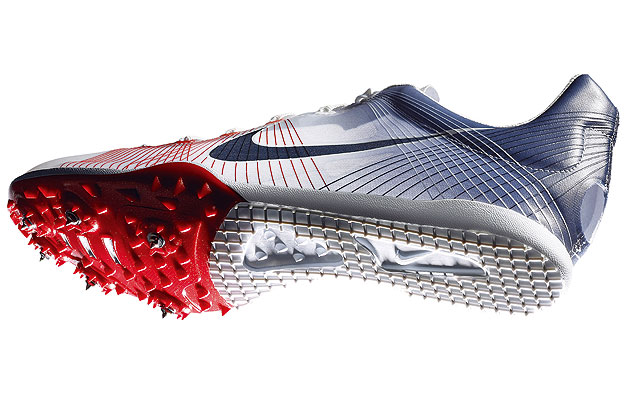|
Nike’s Zoom Victory Spike racing shoe |
||
|
A 10-year survey of American design highlights its commercial colours, says Johanna Agerman Contemporary American design is not something we are frequently faced with. While Dutch, British or Scandinavian design immediately conjure up images in our minds the American counterpart is curiously absent. So Design USA, an exhibition that brings together winners of the National Design Awards at the Cooper-Hewitt National Design Museum in New York over ten years, is a useful overview of the nation’s design scene, albeit a limited one. Annual awards are a helpful tool for pinpointing products and people that helped shape a year – a reassuring barometer of change and progress. Design USA reveals how the American scene is rooted in practical problem-solving rather than seeing the process of design as an intellectual pursuit or social commentary. The only conceptual work on show here is Boym Partners’ Timeless Objects. The focus is instead on technical innovation and commerce, such as Nike’s Zoom Victory Spike racing shoe – an engineering marvel – a clear lipstick case designed by Tsao & McKown architects for Shu Uemura and an evening gown by Toledo Design (who made first lady Michelle Obama’s yellow ensemble for the inauguration ceremony). They all form part of the American commercial landscape, but beyond just presenting the winners can this show tell us anything about the decade? The National Design Awards were conceived to honour the best in American design, but its definition of “American” is in fact very international. Winners include Jonathan Ive (British), Yves Béhar (Swiss) and Stefan Sagmeister (Austrian), all of whom have helped shape iconic Stateside products and campaigns over the past ten years. But internationalism isn’t one of the themes of the exhibition; instead the works are displayed under the topics of technology, material, method, craft and transformation. It’s a curious approach for an exhibition that has the potential to draw an interesting picture of one of the most tumultuous decades in American history, starting with the atrocities of 9/11 and ending with the election of the first black president. To look at the design and architecture of the nation as separate to these events seems like a wasted opportunity, especially as some works in the exhibition have direct links to them. Perceptive Pixel’s Minority Report-like interactive wall is the stuff of dreams for the 24-hour news channels, always in need of impressive graphics to illustrate an event. The iPhone changed the way we communicate. The Google search engine is the first step in any research process. In fact, the most successful contemporary American design is so ubiquitous that we don’t even notice it. There is definitely another story to be told here. Tying design in more closely with the country’s culture and economy would have made for a much more thought-provoking exhibition.
Google Maps
The Design USA exhibition is designed by 2×4 Design USA: Contemporary Innovation is at the Cooper Hewitt, New York, until 4 April 2010 |
Words Johanna Agerman |
|
|
||




















